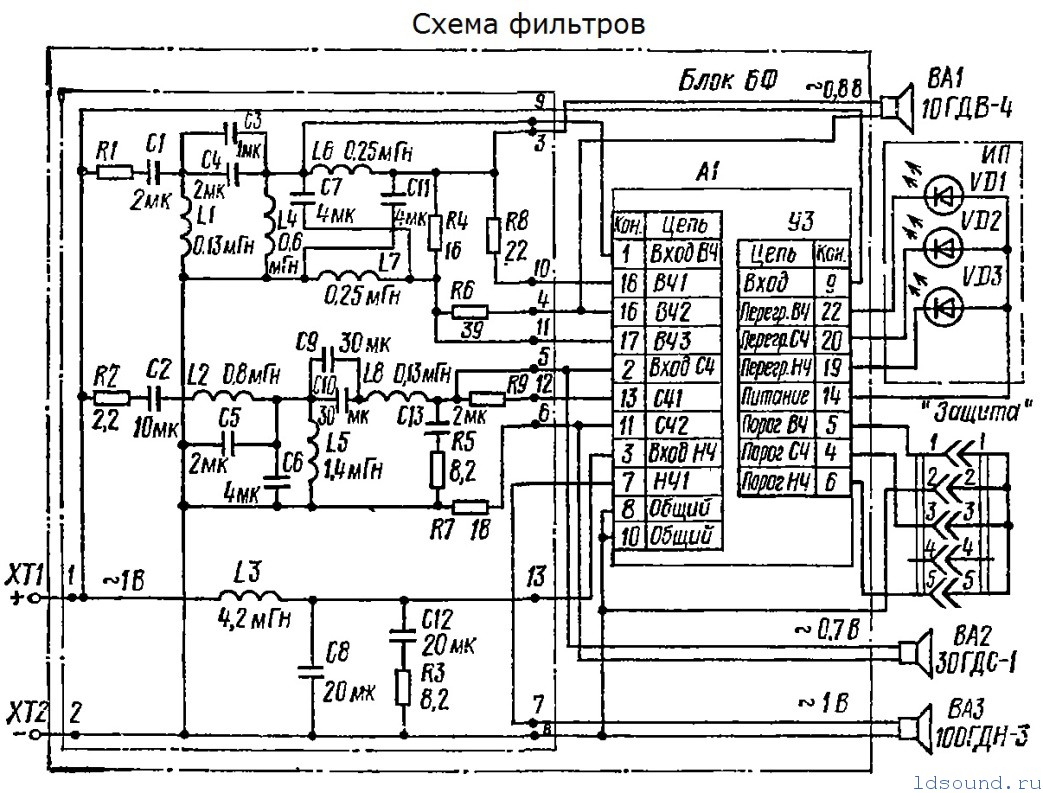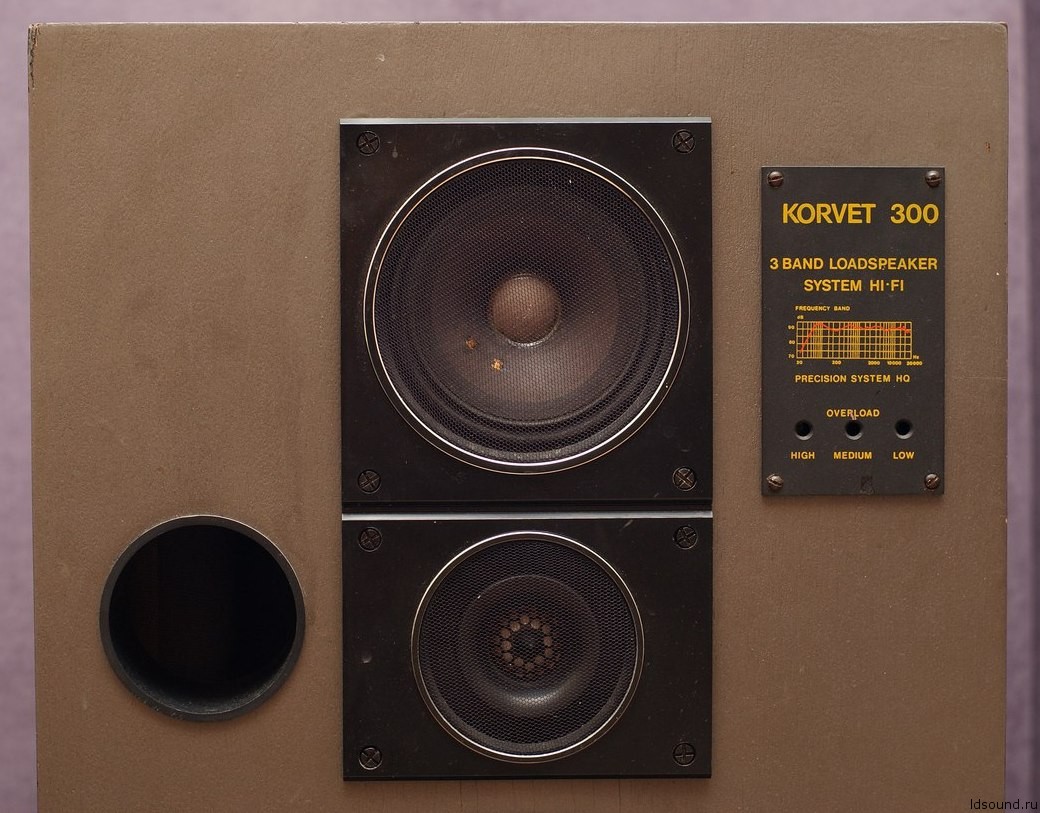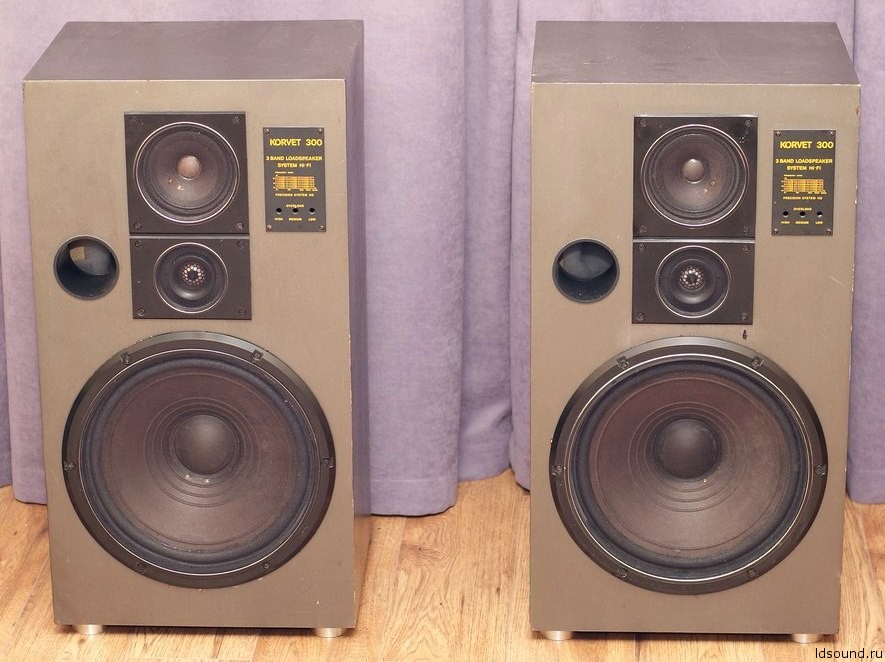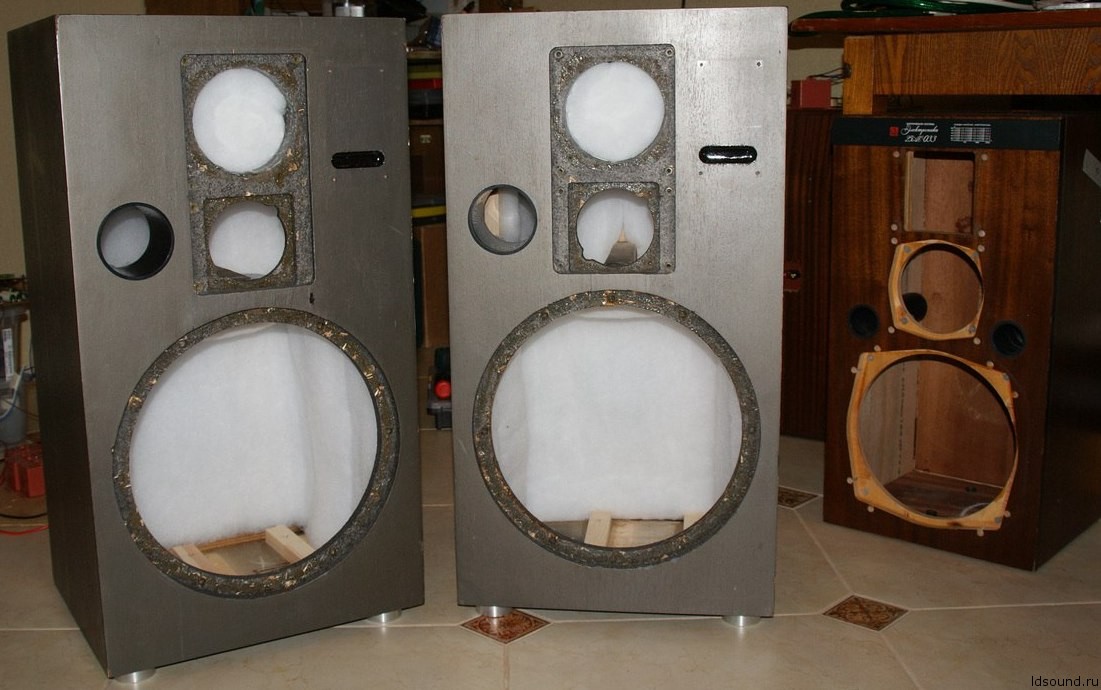It will be a question of one of the last impressive developments of domestic column builders, which, in connection with the change of state standards and various industries, has received many names. This speaker system is best known as the Corvette ”75AC-001, also called“ Cleaver ”75AC-001”, “Corvette” 150AC-001 ”,“ Cleaver ”150AC-001”, “Korvet 300”. But we will deal with the names a little later.

To begin with, I want to note that, according to most contemporaries of these speakers, with whom I had the opportunity to communicate, and just people who are well versed in acoustic systems, this is the development of the VNIIRPA them. Popova became the best speaker in the USSR. So, under the cut - traditional for this cycle descriptions of the capabilities of Soviet engineers and the conditions in which they worked, as well as a brief overview of what they managed to create, that is, the “Corvette” 75 AC-001.
Development in terms of restructuring, publicity and pluralism
It can be said that the memorable “perestroika”, “publicity” and everything that was there with them after 1985 had a positive effect on the development of Soviet audio equipment for a while. Thus, more Western equipment appeared in the Union, more literature from the decaying West, and the opinions of class-alien engineers began to be heard more often.
The fruits of liberalization were not long in coming. At the end of 1986, a group of engineers VNIIRPA them. Popova started the development of a speaker system with characteristics unprecedented for that time.
According to the approved technical assignment, this should have been an AU with a high level of sensitivity, the ability to withstand short-term power values of more than 250 W, and effective protection against overloads.
In addition, from above, having learned about such a promising and ambitious development, they lowered the task of preparing the AU for the storming of foreign counters. For after the “Brig” amplifier and the “Corvette” electrophone (to which Lychnitsky still had a hand), the Soviet highfay had no weighty victories behind the rusting iron curtain.
To accomplish such an ambitious task, the best specialists from VNIIRPA were gathered. Popov. The modeling and determination of the optimal parameters of loudspeakers and separation filters was first conducted on a computer.
Considering the need for an export version, all possible resources were involved, all mechanisms were turned on, so that samples of the new AU were ready for testing in less than 2 years, which can be considered the Stakhanov result for the Soviet column construction.
The first pancake is lumpy
Despite the "green light", the first prototype, which was almost launched in a large series, failed the latest tests. Not many people know that in the first version of the AU 2 phase inverters were planned.
The incorrect acoustic calculation of these phase inverters led to the appearance of pronounced and highly undesirable resonant modes that did not behave in the best way with a complex musical signal.
This shortcoming has become critical in order not to allow speakers in mass production. Interestingly, the passports for new products have already been printed. The picture, kindly published by ldsound.ru, indicates that the early version of the documentation posted an image of columns with two phase inverters.


Deficiencies with the phase inverter calculation were quickly eliminated and in the same year they presented a prototype for testing, which later became a production model. The “canonical” phase inverter of this acoustics was designed with a pipe diameter of 75 mm and a length of 91 mm, which provided a setting of 36 Hz.
Design, features and specifications
The plan to create a competitive Soviet acoustics in the western market was not only fulfilled; in reality, the appearance of such speakers seemed impossible. At that time, the technical solutions used in the 75AC-001 were used primarily in the high-end segment.
The acoustics received the best of the woofers produced at that time in the Soviet Union - 100GDN-3, mid-frequency - 30GDS-1 and dome tweeters - 10GDV-4. For 1988, this was a new generation of loudspeakers that could provide 91 dB (W / m) sensitivity, comparable to the best samples of Japanese and European acoustics of that time.


The frequency range was significantly increased, the columns of the pitch reproduced the low-frequency spectrum starting from 25 Hz, and the tweeters generally went beyond the limits of frequency perception and could emit ultrasound at a frequency of 25 000 Hz.

Irregularity of the frequency response did not exceed -3 dB, distortions in the entire frequency spectrum and in the whole range of operating long-term power were within 1% (probably were less, but the measurement accuracy did not allow to determine this). Surprising for the Soviet acoustics was the high uniformity of the phase response, achieved thanks to the successful design of filters.
For a complete picture of the device, I propose to evaluate the technical characteristics:
- Frequency range: 25 (-19 dB) - 25000 Hz;
- Irregularity of the frequency response in the range of 100 - 8000 Hz: ± 3 dB;
- Sensitivity: 91 dB;
- Characteristic sensitivity: 0.73 Pa√W;
- Rated electrical resistance: 8 ohm;
- The minimum value of the total electrical resistance: 6.4 ohms;
- Extreme noise power: 100 W;
- Ultimate long-term power: 150 W;
- Maximum short-term power: 300 W;
- Weight: 30 kg;
- Dimensions (WxHxD): 38.6x71x34 cm.
Another characteristic feature was the optimal body volume, sufficient for loudspeakers, and the use of an efficient ATM-1 damping material made of staple super-thin glass fibers. This allowed for optimal damping to provide expressive, “deep” reproduction of the low frequencies.

For the first time in the Soviet AU, mounted mounting on a cardboard base was used. The design of the filter used air core coils with a wire of sufficient cross section. Also used were MBGO paper capacitors of optimal capacity, for which small losses and minor distortions were characteristic.

From the point of view of sound, according to one of the authoritative authors of the portal “no schemes”, the most harmful thing was the protection system. Given the purpose of the device, the features of its application and impressive power, its anti-overload limiters turned out to be superfluous.
And as far as they are harmful to sound, people versed in circuit design and electro-acoustics can conclude as follows.

Also, many argue that significant damage is caused to the sound of disparate length cables, which were used to use the acoustics not in the household, but in the so-called. semi-professional conditions (corporate gatherings, school discos, etc.).
Mass production
It is difficult to escape from the system, especially from the Soviet one. You can find talented engineers, purchase samples of foreign equipment for study, provide developers with the “green light” to receive scarce instruments and materials in the still waters of a planned economy, open all bureaucratic “locks” of “administrative resource”, but somewhere there is a solid regressive system still put a pig.
In this case, such a pig has become mass production. Where the merciless Soviet rationalizer could not save, where the Soviet engineer did not tinker, where the Soviet leader didn’t stick his nose, and didn’t add the ideology of the Komsomol, the living hand of the proletarian saved him.
New acoustics went into a series with the names “Corvette“ and “Cleaver“. Her serial release puzzled the flagship of the Soviet high-end Oceanpribor (in St. Petersburg), the Corvette, and the Krasny Luch factory (in the town of Krasny Luch), the Cleaver, in which the speakers for this acoustics were made.
The first problem of the series was the instant replacement of high-quality damping ATM-1 (for some reason very necessary for the workers of this enterprise) with a banal cotton wool. And it is good, if cotton wool was put in an adequate amount.
The second problem was the production “ratsuhi” of the early 90s, which mainly concerned “Ocean Pribor” (Lychnitsky complained about this in his memoirs). First, they made it easier to recipe a multicomponent compound, which was impregnated with midrange drivers 30GDS-1. Then they excluded, "as unnecessary," the internal vibration isolation of the speaker enclosure.

The situation was somewhat different with the export version of acoustics, which was not structurally different from its counterpart for the domestic market. At the same time stolen at its production, judging by the surviving copies, probably less. About its design and features can be judged by the photo, published already mentioned
ldsound.ru


Epilogue
Mass serial production of the last impressive achievement in the Soviet HI-FI lasted until 1992, after which production volumes dropped sharply and then stopped altogether. In my opinion, the history of this AS, as well as other serious developments in the field of high fidelity equipment, demonstrates the capabilities of Soviet engineers, the quality of their education and qualifications. In addition, it makes it possible to assess the complete unviability of the Soviet system of remuneration for labor, the management of the production of household appliances and a planned economy.
Jeans
Our
catalog contains a variety
of high fidelity
loudspeakers .
Used photocontent ldsound.ru